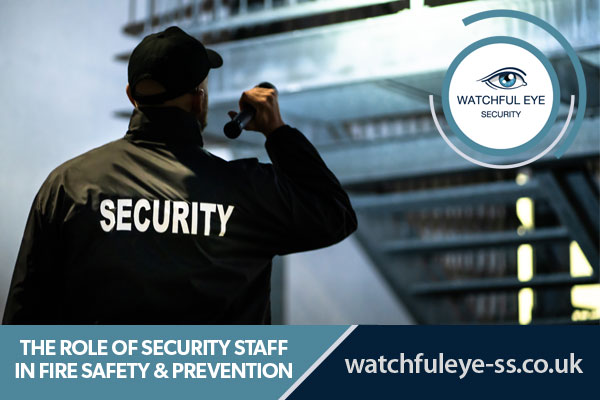
The role of security staff in fire safety & prevention
Anyone who uses or occupies a building expects that the building will be fitted with protective systems that will assist with protecting the building should a fire occur. Unfortunately this is not always the case, the Grenfell tower disaster is now, an all too recent example of inadequate fire safety systems and poor maintenance, despite many of the residence raised concerns.
he inquiry into the Grenfell tower disaster reported amongst other things that “A number of key fire protection measures inside the tower failed. Although some fire doors held back the smoke, others did not. Some were left open and failed to close because they lacked effective self-closing devices”.
https://www.grenfelltowerinquiry.org.uk/
Security personnel are likely to be the first responders at the scene of any fire alarm activation at their workplace. If they are not the first responders they will probably be the first to be alert to or notified of a fire alarm activation, monitoring of fire systems normally falls under the remit of onsite security personnel or offsite monitoring facilities.
The role of security during emergencies such as fires is determined on the training provided and expectations of the service by their employer. Expectations should be thoroughly documented and explained and the appropriate level of training provided before the security personnel attend any incident.
What additional assistance could security personnel provide to prevent fires from initially starting to measure they could instigate to prevent a fire from spreading?
After all, fire training provided to most security personnel often only involves the basic information such as the type of fire extinguisher that are available to use and the fire triangle. Image ML 2020
At work
Under Section 19 of the Health and Safety Welfare at Work Act 2005 “every employer shall identify hazards, assess risks, including any unusual or other risks such as fire”. To comply with Section 19, employers are required to carry out risk assessments and to record these. A fire safety risk assessment should be conducted. As part of this assessment fire doors should be included.
Furthermore any business is also required to comply with fire safety law. The main law is Regulatory Reform (Fire Safety) Order 2005, also known as Fire Safety Order.
Fire doors are a huge part of a building’s fire protection systems, a vital requirement for all buildings where people congregate, and are just as vital a part of the overall fire prevention system as would be sprinklers and the actual fire alarm system.
Fire doors, as with any other door, must perform its base task on a daily basis, however unlike a regular door must be regularly inspected to ensure that during a fire, it performs correctly e.g. closing to its correct position, not wedged open or catching on the floor to ensure a flush fit so that it can create an effective barrier. This will ensure that the specialised nature of the door is utilised to its full potential allowing when an actual fire occurs that the fire is slowed and potential escape routes are accessible and lives could ultimately be saved.
So what could security personnel do to prevent fires spreading through your premises?
The role of a security officer involves the patrolling of premises, internal and external inspection of buildings and equipment.
1. Whilst patrolling, and as part of equipment checks – add fire door checks. When checking doors consider:
Do they close and fit snug in to the frame of the door?
Is signage present?
Has the door dropped?
Are hinges and door closures in good working order?
Are there any visual signs of damage?
Door hardware, (Locks, handles) does it operate correctly?
Are smoke seals fitted and in good order?
Are there excessive gaps between the door and frame? (no more than 3mm)
2. Report any build-up of waste. Organisations often have waste, paper, plastics etc. Waste should not be allowed to build up, especially inside or near to buildings.
3. Ensure Fire exits are kept clear at all times.
4. If discovered, report these findings to the appropriate departments with the organisation and record these in the Safety Statement and fire safety risk assessment.
Ultimately, the responsibility of maintenance and inspection of all fire doors would fall under the remit of that company’s Facilities Management team. However the very nature of the role of security is that they are more likely to use and monitor most doors across a site and are able to spot and report faults to ensure that doors are working correctly. The facts are that fire doors save lives by holding back and preventing fires from spreading quickly. Ensuring they are at their most effective could be the difference between a minor fire and a major disaster.
Discover more about our fire safety patrols.

